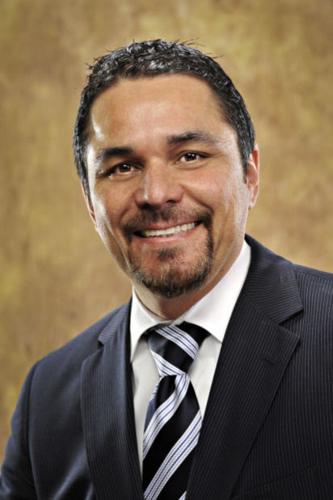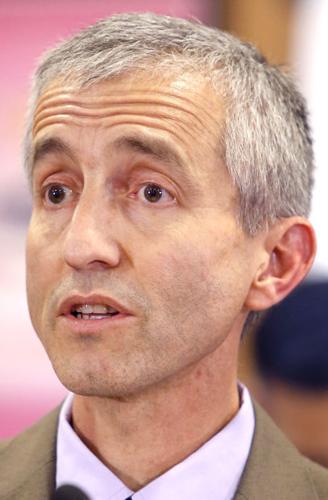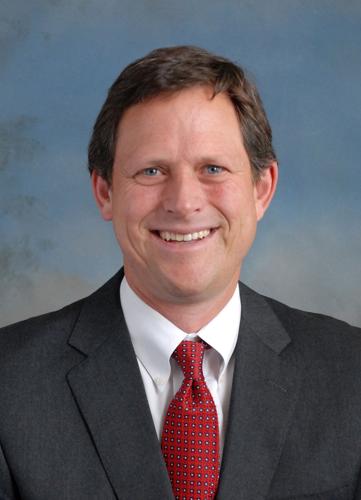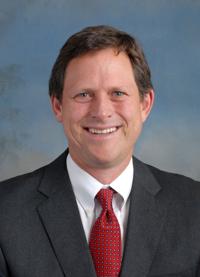The governing boards of four Tucson area districts have called for special elections to ask voters for help.
Sunnyside and Flowing Wells districts want maintenance and operations override elections; Sahuarita wants a bond election and Catalina Foothills wants both.
Maintenance and operations — or M&O — overrides support functions inside schools, including teacher salaries and general operations.
Capital overrides, which is what Catalina Foothills is seeking, support things such as classroom furniture and technology.
Bonds fund larger projects, including construction of new schools and improvements to existing facilities.
The Star asked the superintendents of the districts about how a budget override or bond would help their districts and what would happen if the measures were to fail.
Sunnyside Unified School District – Steve Holmes
Q. How much are you asking for and why is this override necessary?
A. We are asking for a 15 percent override, which amounts to $11.8 million annually for five years. We believe it’s necessary because our maintenance and operations budget has declined significantly over the last five years, which has made it very difficult for us to sustain programs that we felt were really beneficial to our community and to our students.
Q. Please name the three priorities this override is going to address.
A. There are a number of priorities, but if I were to name the top three, I would say it would be our continued investment in our early childhood programs to include full-day kindergarten ... to develop a salary schedule that ensures competitive wages to attract and develop and retain high-quality educators (and) looking at our class sizes to make sure that they are conducive to effective learning and (are) manageable for our teachers.
Q. How much would this override cost the taxpayers?
A. It would cost the taxpayers roughly $200 annually for the average Sunnyside homeowner.
Q. Please describe the impact if an override were to fail.
A. It would really be on those programs that are used to support the classrooms, such as our class size, music and art programs, librarians and counselors and school safety personnel — areas that we feel are so essential to running a school district. Those are going to have to be reduced to be able to continue to maintain a healthy school district.
Q. What is the district’s plan if the override fails?
A. Begin a prioritization process with the governing board to see what cuts will be made to keep them furthest from the classrooms. The reality is that most of the support programs are supported by people, so unfortunately, it would mean cutting some positions. We know that for us to really keep up with the cost of living for our employees, we need this override to ensure competitive wages for our community.
Sahuarita Unified School District – Manuel Valenzuela
Q. How much are you asking for and why is this bond necessary?
A. Our board has called for a $40 million bond. The board thinks it’s necessary for two basic reasons. First, we have a need for new classroom space and new schools. The other issue that’s relevant is the significant decline in state funding for capital (improvements). We have been cut 85 percent in the area of capital or district additional assistance, which are funds that provide mission-critical resources, such as equipment, repairs for the plant, instructional technology and school buses. It’s difficult to advance progress when such significant cuts in these areas are sustained.
Q. Please name the three priorities this bond is going to address.
A. Due to the growth in our community, one of the top priorities is the construction of a new school to serve students in the K to 8 grades ... the renovation of several schools, specifically those that are older and are in need of remodeling, (and) the purchase of transportation vehicles. Our district covers over 600 square miles. We drive 3,000 miles every day. We have an important need to regularly introduce vehicles to deliver service to all of our students in the area.
Q. How much would this bond cost the taxpayers?
A. The projection is that it would cost an average taxpayer in the Sahuarita district about $60 a year or about $5 a month.
Q. Please describe the impact if a bond measure were to fail.
A. First, there is a significant likelihood of overcrowded classrooms and higher class sizes. We are growing and we do need to address that kind of growth. The additional impact would be our plan to systematically update and maintain our facilities at the highest level of efficiencies. It would impact our ability to maintain and update our fleet of climate-controlled vehicles to deliver services to our students.
Q. What is the district’s plan if the bond measure fails?
A. If it were to fail, the first thing we will do is to continue — as is our standard — to deploy the maximum amount of resources that we have and to continue to advocate at the state level for the resolution of some of the funding issues.
Flowing Wells Unified School District – David Baker
Q. How much are you asking for and why is this override necessary?
A. The 10 percent maintenance and operations override election is a request to continue the current 10 percent override previously approved by the Flowing Wells voters. The override would generate $2.5 million over five years.
Q. Please name the three priorities this override is going to address.
A. The override will maintain programs that have been in place with prior override approvals and includes hiring additional teachers to maintain class sizes, offering full-day kindergarten, and offering a variety of specialized programs in all grade levels to include fine arts, technology and physical education.
Q. How much would this override cost the taxpayers?
A. The override election is a request for continuation of the current override, which is approximately equal to the current tax rate levied for the existing override. The tax rate is $1.37 per $100 of net assessed evaluation. The estimated cost to an average homeowner in the district would maintain at approximately $10.65 per month.
Q. Please describe the impact if an override were to fail.
A. If the override were to fail, the district would be required to reduce the override amount by one-third each year over a two-year period.
Q. What is the district’s plan if the override fails?
A. The district would have to identify areas to decrease maintenance and operations expenditures that could include increasing class sizes, reducing or eliminating programs, reducing salaries, and/or reducing and eliminating current positions.
Catalina Foothills School District – Mary Kamerzell
Q. How much are you asking for and why are the override and bond measures necessary?
A. There are two questions on the ballot for Catalina Foothills School District. One is for bonds and the other is for a capital override.
We are requesting $22 million in bonds to address approximately 150 facility projects that need attention. The projects fall into the three categories of building renovations, improvements to grounds and energy efficiency upgrades at all of our school campuses. There is no new construction in the proposal. We want to preserve the investment that our community has already made in its school buildings and grounds.
The second question on the ballot asks voters to renew a capital override that ends this year. It is for $2 million annually for seven years. If approved, these funds will continue to underwrite technology and curriculum resources used daily by our students and teachers. The dollars will make it possible for us to continue the infusion of technology equipment, software and tech-based curriculum materials and resources into classrooms to support teaching and learning.
Q. Please name the three priorities the override and bond measures are going to address.
A. The bonds will upgrade classrooms with new millwork, countertops, carpeting, tile, etc.; replace school AC units and roofs; and upgrade playgrounds and athletic fields.
The capital override will make it possible to equip each student with at least one Internet access device, provide other hardware and software like science-related probeware and LEGO robotics kits, and address infrastructure needs like server hardware, network improvements and our VoIP communication system.
Q. How much would each measure cost the taxpayers?
A. The tax rates for both the bonds and capital override are expected to remain at their current levels, which are 67 cents and 35 cents, respectively.
Q. Please describe the impact if these measures were to fail.
A. Most of the bond projects target the replacement of infrastructure that is reaching the end of its life. Simply put, we don’t have the resources to pay for one large emergency repair like replacement of chillers or roofs on our high school campus.
The capital override funds for technology and curriculum resources mean that teachers and students have what they need to support teaching and learning each day. Over time, without these dollars, the tech tools will reach the end of their useful life.
Q. What is the district’s plan if they were to fail?
A. Ultimately, the CFSD Governing Board decides how to proceed, but I think it’s likely that we would try again in November 2016. There is no other way to address all of these needs without financial support from local taxpayers.











